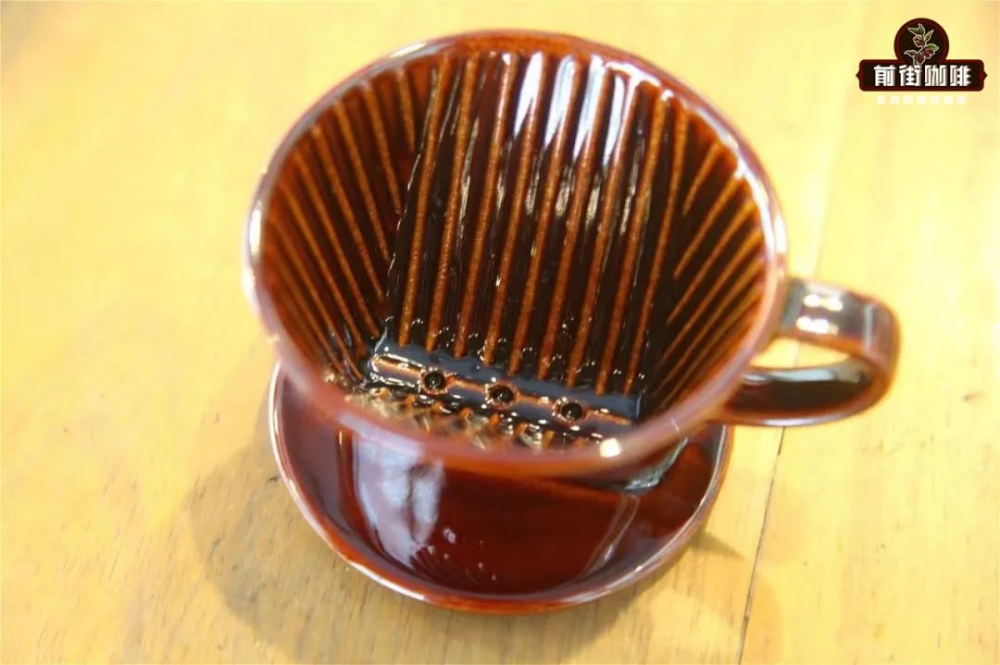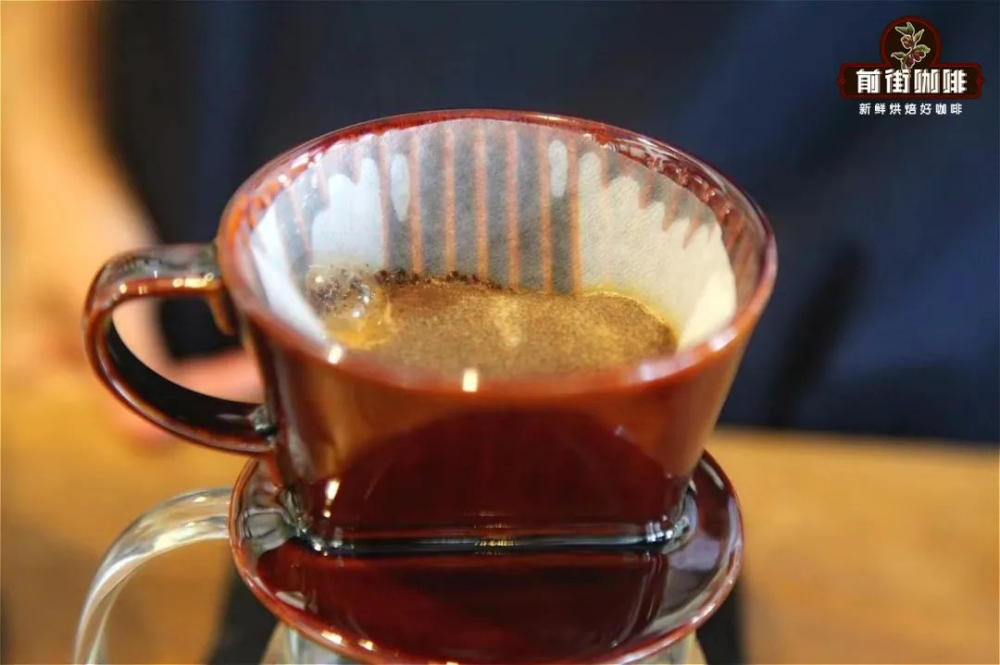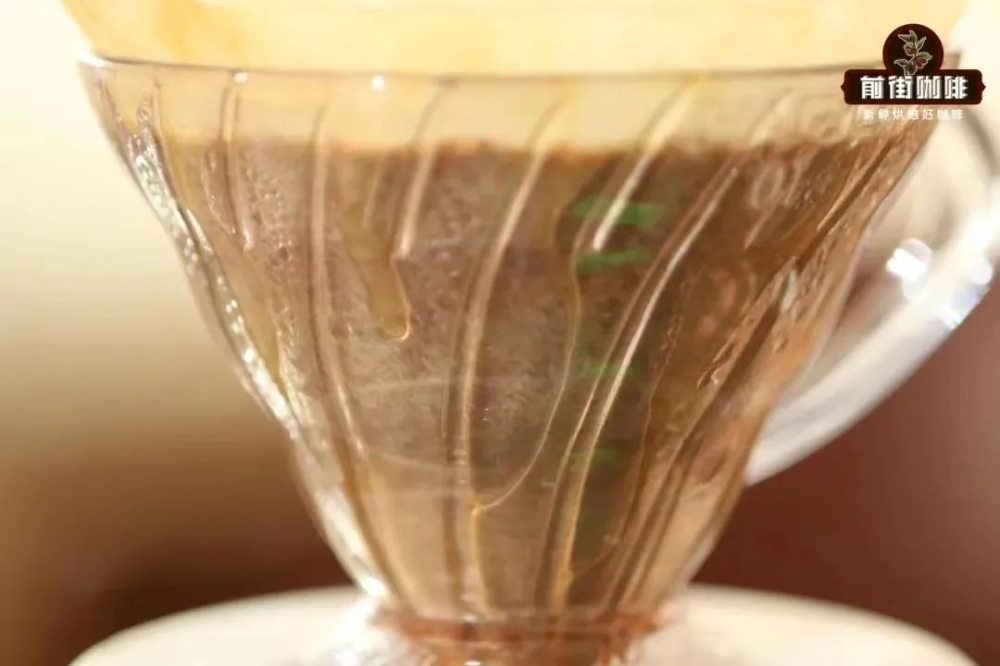What is the difference between the flavor characteristics of hand-brewed coffee between kalita trapezoidal filter cup and hario v60 filter cup
I don't know if you have noticed, except for some large chain brands, and few coffee shops use trapezoidal filter cups to produce hand-brewed coffee. now almost all of them are filter cups with conical large-hole structure. Qianjie will take you to explore.
The first filter cup in the world is the trapezoidal filter cup of Melitta in Germany, which is an inverted ladder-shaped single-hole filter cup with wide top and narrow bottom. Because the filter paper used is shaped like a fan, it is also called a fan-shaped filter cup. Due to the popularity of Italian coffee at that time, hand-brewed coffee has always been a very minority household coffee appliance.

Until 1959, hand-brewed coffee was popular in Japan. Japanese Kalita "borrowed" this trapezoidal filter cup and improved it, changing it from single hole to three holes. Kalita's trapezoidal filter cup has become a classic trapezoidal filter cup.

The earliest conical filter cup was invented by Kono in 1968, while the classic V60 filter cup in the conical filter cup was introduced around 2000. In that case, Qianjie uses the classic Kalita 101in trapezoidal cups to compare the classic V60 in conical cups, and you may be able to see why conical cups are now used, and trapezoidal cups are less and less. In the front street, the washed Yejia Xuefei was compared with the Jamaican Blue Mountain Coffee, and the brewing parameters were unchanged. The flavor is as follows: [Yega Chuefei] V60: light aromas of white flowers and citrus fruits, citrus sweetness and green tea, clean and layered. Kalitta: sweet fruit, sweet and sour citrus, obvious sense of tea. The palate is full, full-bodied and balanced.

[blue Mountain] V60: the palate is refreshing, with dark chocolate, nuts and hints of sweet and sour fruit. Kalitta: nutty, dark chocolate flavor, mellow taste, sweet and sour balance, comfortable. From the coffee flavor performance of these two filter cups, it can be seen that the conical filter cup represented by V60 is good at expressing coffee bean flavor, and the trapezoidal filter cup represented by Kalita is good at showing the balance and thickness of coffee. As a result, the two kinds of filter cups can produce different flavor performance, and the secret lies in their structure. The spiral long and short diversion ribs of V60 and large sewer holes make the water soak into the coffee powder and flow down through the diversion bone quickly, and the conical structure is easy to achieve uniform water injection during water injection. It belongs to the filter cup which releases the coffee substance by washing coffee powder with water. except for the kono filter cup which was born earlier, the conical filter cup that appears later belongs to this type.

Although the trapezoidal filter cup also has ribs, these vertical ribs play a more important role in the exhaust of coffee during steaming. Three small water holes make the launching speed relatively slow, although the trapezoidal structure is not conducive to uniform water injection. However, the slow water injection speed makes the water injection less rigorous. This design makes the coffee extracted in soaking most of the time, so the overall performance of the coffee will be more full. Well-balanced, mellow taste.

Back to the question of why trapezoidal filter cups are becoming more and more rare now, it is actually a retreat from the environment. V60 was born around 2000 because of the need, at that time when the transition from deep-roasted coffee to light-roasted coffee was the mainstream period, for light-roasted coffee, pay more attention to the expression of flavor. V60 is also respected by the public and regarded as a classic because it can better express the flavor of coffee (of course, marketing is also a reason). When community coffee shops with hand-flushing are everywhere, the exposure of cone-shaped filter cups increases greatly, and other shape filter cups, including trapezoidal filter cups, are relatively rare. However, we can also see coffee products with trapezoidal filter cups in some large chain coffee shops. This also has to say that the advantage of trapezoidal filter cup-stability. Because the trapezoidal filter cup has the characteristics of slow launching, soaking and extraction, and reducing the influence of water injection, as long as the amount of powder, grinding degree, water temperature, ratio and extraction time are designed, the only thing the barista needs to do is to pour the water within a fixed time. Whether you are a rookie or an experienced expert, the final coffee performance will not be too far. Therefore, these stable, easy-to-use and easy-to-operate coffee filter cups are very favored by coffee chains with strong personnel mobility.
Important Notice :
前街咖啡 FrontStreet Coffee has moved to new addredd:
FrontStreet Coffee Address: 315,Donghua East Road,GuangZhou
Tel:020 38364473
- Prev

How much water is appropriate for brewing coffee powder? Hand brewed coffee proportion water temperature grinding degree parameter knowledge
The ratio of coffee powder to water is a very important parameter for hand brewed coffee. In layman's terms, in the case of a fixed amount of powder, there is a water injection amount just right to express the flavor of coffee. Therefore, learning to find coffee powder water ratio is also an important part of learning to brew coffee. What does the ratio of powder to water affect coffee?
- Next

The reason why the coffee turns sour when it is cold, is the coffee hot or cold?
I don't know if you have ever encountered that after I had just made a pot of coffee, I thought it was delicious, and I was going to spare 10 minutes for a detailed taste, when suddenly there were some emergencies to deal with. More than half an hour later, I was finally able to taste my own coffee, but found that there was something wrong with the taste of the coffee.
Related
- Beginners will see the "Coffee pull flower" guide!
- What is the difference between ice blog purified milk and ordinary milk coffee?
- Why is the Philippines the largest producer of crops in Liberia?
- For coffee extraction, should the fine powder be retained?
- How does extracted espresso fill pressed powder? How much strength does it take to press the powder?
- How to make jasmine cold extract coffee? Is the jasmine + latte good?
- Will this little toy really make the coffee taste better? How does Lily Drip affect coffee extraction?
- Will the action of slapping the filter cup also affect coffee extraction?
- What's the difference between powder-to-water ratio and powder-to-liquid ratio?
- What is the Ethiopian local species? What does it have to do with Heirloom native species?

